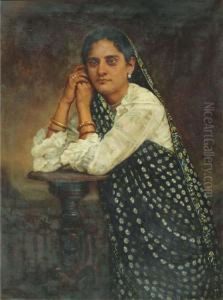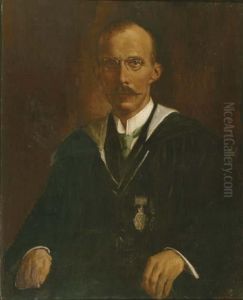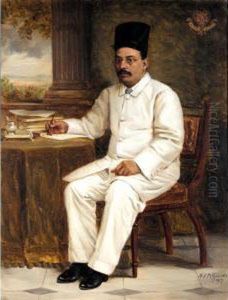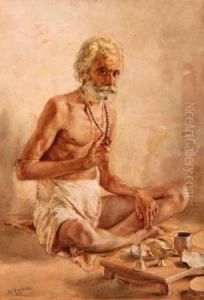Manchershaw Pithawala Paintings
Manchershaw Pithawala, born in 1872 in Surat, Gujarat, was an eminent Indian artist known for his proficiency in portraiture and academic realism. His full name was Manchershaw Fakirjee Pithawala, and he was a Parsi. From a young age, Pithawala demonstrated a keen interest in drawing and painting, and his talent was evident. He pursued his passion for art by enrolling at the Sir J.J. School of Art in Mumbai, which was one of the foremost art institutions in India at the time. There, he honed his skills and was influenced by the Western academic art traditions that were predominant in the curriculum.
Pithawala's artistry was recognized early in his career. He became renowned for his masterful portraits, which captured not just the physical likeness of his subjects but also their character and essence. His works were characterized by meticulous attention to detail, subtle use of light and shadow, and a remarkable ability to depict textures and fabrics. Pithawala's portraits often included prominent figures of his time, and he was highly sought after for his portrait work.
Beyond portraiture, Pithawala also painted landscapes, still lifes, and scenes from everyday life. His versatility and the quality of his work earned him accolades and awards, both in India and internationally. He participated in several exhibitions, including the Bombay Art Society's annual shows, where he frequently won prizes. His international recognition was further cemented when he won a gold medal at the 1924 British Empire Exhibition held in London.
Pithawala's contribution to Indian art was significant not just in terms of his own work but also in his role as an educator. He served as a teacher at the Sir J.J. School of Art, where he influenced a generation of young artists. His teaching and mentorship helped shape the future of Indian art at a time when the country was experiencing cultural and nationalistic awakening.
Manchershaw Pithawala passed away in 1937, leaving behind a legacy that has continued to inspire artists and art connoisseurs. His works are considered an important part of the Indian art canon and are held in high regard for their technical proficiency and the window they provide into the society of his time.



